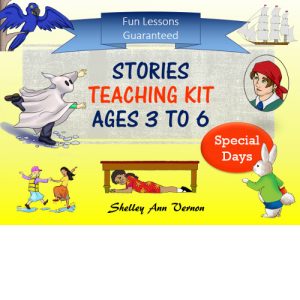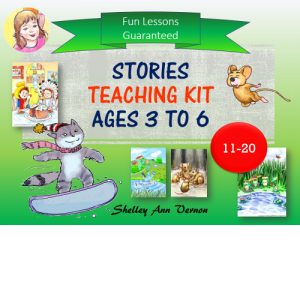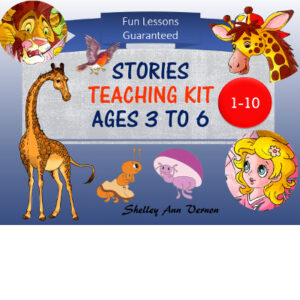Teaching English for kindergarten strategies
The ultimate strategy for success teaching English for kindergarten is to learn through play. There are many reasons for this, including multiple intelligences, TPR and intrinsic motivation. Let’s get started with the theory of intrinsic motivation.
Intrinsic Motivation
Intrinsic motivation is the idea that people are motivated to do things because of internal factors. Preschool children are not going to understand the advantages knowing a second language will give them. They are probably not thinking that they want to go to school to learn a second language, especially when they are still trying to grasp their first language.
That is why it is important to motivate them to want to do the class activities. In addition, children are more likely to join in and enjoy themselves when they participate in playful activities and physical movement.
Activity-based learning & TPR
Other research includes the theory of activity-based learning or total physical response. This theory states that movement stimulates neural networks and activates mental capacities, which are not activated when sitting at a desk. As a result, children are more likely to be curious when presented with music, games, and total physical response activities, and therefore are more likely to learn and retain knowledge. That’s the theory, and in reality, TPR is essential when teaching English for kindergarten! Check out my stories and TPR lesson plans to make your teaching easier and more fun.
Examples of total physical response activities are:
1. Making alphabet shapes with your body
2. Using your body and props to imitate different types of weather
3. Using your voice, body, a prop to represent vocabulary or meaning.
On the other hand, a dull vocabulary idea is having children pick up pictures and name them. Instead, to turn this into a fun total physical response activity, tell your children they are pirates who have lost their treasure overboard, and they must dive down and retrieve it. Demonstrate by taking in a big breath, hold your breath and dive down and pick up one of the cards, then come up for air and ask the children to name the card, or you name it, depending on whether you are doing a speaking or listening activity. Next, tell the children which pictures to dive down and collect. You could make it even more dramatic by dimming the lights when the children dive down and turning them up when they surface.
Repetition and immersion
When you use games, songs, and stories to teach ESL to your preschool students, rely on absorption by repetition. The more they hear and experience the vocabulary you teach, the more likely they will learn it. But who wants to sit in a class simply repeating words and what they mean? Certainly not three to five-year-olds. You will soon have a classroom of unruly children who are not learning a thing. On the contrary, if you engage them in a game, song, or story, they will understand and use the language simply from the exposure. Feel free to check out my book of fun games to make teaching English at kindergarten more fun.
Play, enjoy, relax
Teaching English for kindergarten requires games, play, movement, and songs, to make learning language a fun, positive experience. Playing games is relaxing (as long as you do not use competition at this age) and allows students to learn without the stress or fear of possible failure.
Multiple intelligences
A final thought on learning through games stems from Dr. Howard Gardner’s Theory of Multiple Intelligences. In this theory, Gardner has defined several learning areas and has explained that not everyone learns in the same ways. Types of intelligence include the following:
- Linguistic intelligence: Learning and using spoken and written language
- Logical-mathematical intelligence: Logically analyzing problems, detecting patterns, reasoning.
- Musical intelligence: Performing, composing, and appreciating rhythmic or melodic patterns.
- Bodily-kinesthetic intelligence: Using the whole body or parts of the body to solve problems.
- Spatial intelligence: Recognizing space and confined areas.
- Interpersonal intelligence: Effectively working with others.
- Intrapersonal intelligence: Understanding self and feelings.
Using games in your kindergarten English classes will allow you to reach students in whatever way they best learn. With a bit of creativity and variety in the choice of games, teachers can appeal to all students by tapping into their different learning styles.
If you are still not convinced that games, stories, and music are the best way to teach language to preschool ESL students, then spend some time observing children of this age. For example, they can learn numbers when building a block tower and counting how high they can make it. Likewise, they can learn colours when using crayons. They can learn vocabulary (in their own language) by playing make-believe with other children or adults. Their minds are like sponges that absorb so much when they are engaged in activities they enjoy.
Shelley's teaching English for kindergarten kits incorporate it all!
My preschool resources especially formulated for children learning English as a second or foreign language will make your life easy, fun, and stress-free.
-
Preschool
Special Days Stories Teaching Kit + PowerPoints
Rated 0 out of 5€39.97Original price was: €39.97.€29.33Current price is: €29.33. Add to cart -
Preschool
ESL Preschool Stories 11-20 Teaching Kit + PowerPoints
Rated 0 out of 5€39.97Original price was: €39.97.€29.33Current price is: €29.33. Add to cart -
Preschool
ESL Preschool Stories 1-10 Teaching Kit + PowerPoints
Rated 0 out of 5€39.97Original price was: €39.97.€29.33Current price is: €29.33. Add to cart



